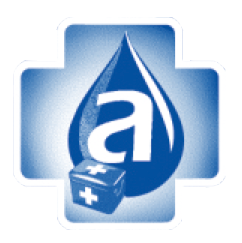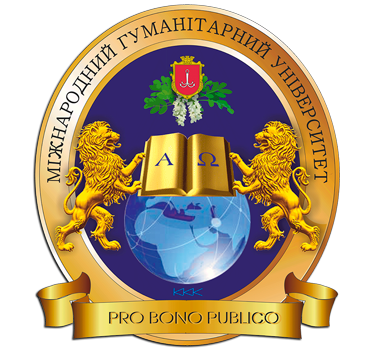COAGULATION RESPONSE OF THE HEMOSTATIC SYSTEM TO THE USE OF NOACS AND ENOXAPARIN IN THE EARLY POSTOPERATIVE PERIOD FOLLOWING CAROTID ENDARTERECTOMY
DOI:
https://doi.org/10.32782/2411-9164.22.1-9Keywords:
аcute cerebrovascular accident, stroke, carotid endarterectomy, coagulation, hemostatic system, carotid artery stenosis, thromboprophylaxis, enoxaparin, rivaroxabanAbstract
Introduction. Ischemic stroke remains one of the leading causes of disability and mortality worldwide. Among its primary etiological factors, atherosclerosis of the major arteries of the head, particularly the internal carotid artery, predominates [1]. According to the American Heart Association, up to 15% of ischemic strokes are caused by hemodynamically significant stenosis or occlusion of the carotid arteries [2]. Accordingly, carotid endarterectomy (CEA) is recognized as an effective method for secondary prevention of ischemic stroke, significantly reducing the risk of recurrent cerebrovascular events [3]. The postoperative period following CEA is accompanied by hyperactivation of the coagulation system due to surgical trauma, changes in blood rheology, and the inflammatory cascade. This environment predisposes patients to thrombosis both at the surgical site and in other vascular territories [4]. Therefore, adequate thromboprophylaxis is a key component of postoperative management.For many years, low-molecular-weight heparins (LMWHs), particularly enoxaparin, have been the cornerstone of antithrombotic therapy in surgery. Its mechanism of action is based on the inhibition of factor Xa, ensuring a rapid and effective antithrombotic effect [5]. However, LMWHs require parenteral administration, limiting their convenience in outpatient settings.In contrast, novel oral anticoagulants (NOACs), such as rivaroxaban – a selective factor Xa inhibitor – demonstrate comparable efficacy and safety in thrombosis prevention of various origins. Their advantages include fixed dosing, no need for laboratory monitoring, and minimal interaction with food or other medications [6].Data from the XAMOS and RECORD trials confirm rivaroxaban’s effectiveness in postoperative thromboprophylaxis in orthopedic surgeries, which may be extrapolated to patients undergoing CEA [7].In this context, low-frequency piezoelectric thromboelastography (LFPT) is of particular interest, as it allows real-time assessment of the patient’s coagulation status [8]. Objective. To determine the most effective thromboprophylaxis approach after CEA by comparing the effects of rivaroxaban and enoxaparin on the coagulation component of the hemostatic system using low-frequency piezoelectric thromboelastography. Materials and Methods. This study is based on a comparative analysis of the hemostatic system in patients with stenotic carotid artery atherosclerosis (CAA) who underwent carotid endarterectomy. A total of 32 subjects were examined, including 22 patients in the main cohort and 10 in the control group, consisting of healthy volunteers matched by age and sex. Patients were divided into two clinical groups based on the type of postoperative anticoagulant therapy: Group 1 (n = 11): Received rivaroxaban 15 mg orally twice daily starting from the first postoperative day for 7 days.Group 2 (n = 11): Received enoxaparin 0.4 ml (4000 anti-Xa IU) subcutaneously twice daily for the same duration. The coagulation status was assessed using low-frequency piezoelectric thromboelastography (LFPT), which enables real-time monitoring of the comprehensive dynamics of hemostasis. Measurements were taken on postoperative days 3, 5, and 7 to monitor the coagulation potential changes under different anticoagulant regimens. Results.ICD dynamics on days 3, 5, and 7 (by group): Group 1: Highest initial rate (97.34%), complete normalization by day 5.Group 2: Lower initial rate (77.75%), also normalized. Control group: Slow normalization, elevated levels remain by day 7.HAD dynamics on days 3, 5, and 7 (by group): Group 1: Initial high hyperaggregation (65.81%), normalization by day 7.Group 2: Moderate initial increase (18.28%), also normalizes. Control group: Starts at Group 2 level, rises to 26.46% by day 7—persistent hypercoagulation.Conclusions. The study results demonstrated a statistically significant positive trend in hemostatic parameters in Group 2 patients receiving rivaroxaban, indicating more effective restoration of coagulation homeostasis compared to Group 1, where enoxaparin was used for thromboprophylaxis.
References
Sacco R.L. et al. Stroke incidence and risk factors. Stroke, 2020.
Benjamin E.J. et al. Heart Disease and Stroke Statistics. Circulation, 2021.
Halliday A. et al. 10-year results of the ACST-1 trial. Lancet, 2019.
Poredos P. & Jezovnik M.K. Pathophysiology of venous thrombosis. Int Angiol., 2018.
Fareed J. et al. Clinical use of LMWHs. Clin Appl Thromb Hemost., 2016.
Kubitza D. et al. Safety, pharmacodynamics and pharmacokinetics of rivaroxaban. Thromb Haemost, 2005.
Eriksson B.I. et al. Rivaroxaban in major orthopedic surgery: RECORD program. J Bone Joint Surg Am., 2009.
Tarabrin O.O., Yurieva I.V. Thromboelastography in Modern Anesthesiology. Current Issues in Medicine, 2021.






